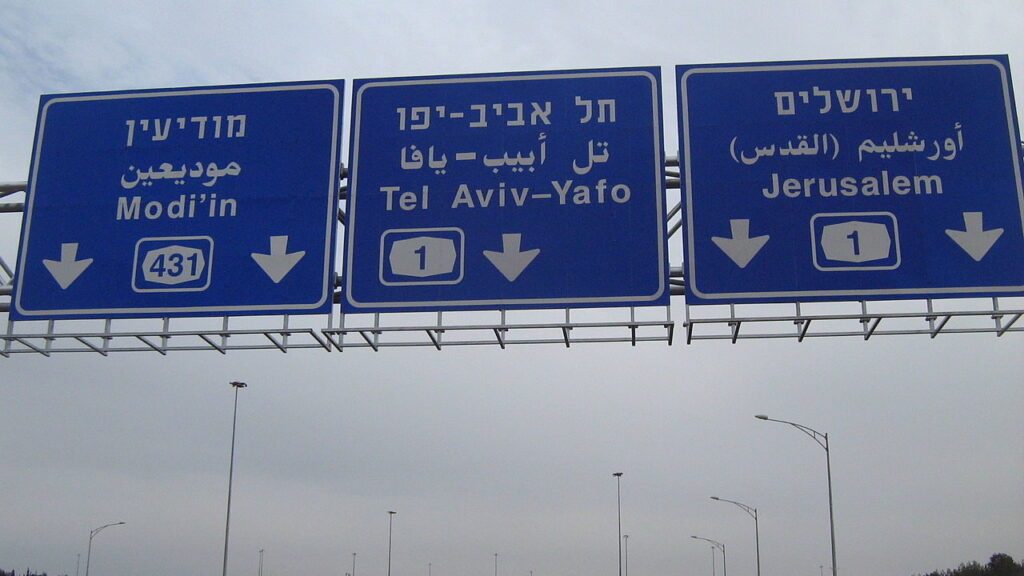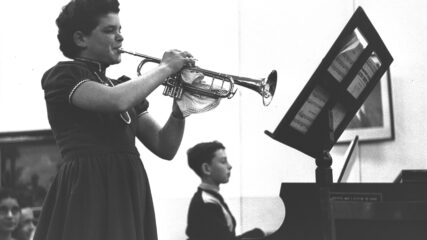David Koren, Jerusalem Institute for Strategy and Security, August 17, 2019
With permission, read full article at JISS.
The recent State Comptroller’s report on Jerusalem (“Developing and Strengthening Jerusalem’s Status,” July 2019) indicates continuing Jewish emigration from the city. Israel must act to reverse this trend by making Jerusalem a more attractive place.
The report sheds light on Jerusalem’s sensitive demography. According to the report, Jerusalem’s population growth continues primarily due to the capital’s high rate of natural increase (the number of births minus number of deaths). But simultaneously, migration of Jews out from the city continues. This trend has been consistent for some years. In the view of the State Comptroller, the continuation of these demographic trends may create, in the short and medium-term, an increase in the relative proportion of children and elderly in the city’s population, resulting in increased municipal expenditure on education and welfare services. This is challenge for which the municipality of Jerusalem must prepare accordingly.
Jerusalem is the largest and most complex city in Israel. According to data from the Israeli Central Bureau of Statistics (ICBS) at the end of 2017 Jerusalem residents comprised roughly 10% of the total population of the State of Israel (901,302 persons). 62.1% of the city’s population are classified as “Jews and others” (559,849 persons), and 37.9% of its residents are classified as Arab (341,453 persons). Natural increase constitutes the bulk of Jerusalem’s population growth and the rate of that increase has remained constant. This trend is also reflected in the average size of the capital’s households. For example, in 2017, the average size of a Jewish household in Jerusalem was 3.38 persons per household (compared with the national average of 3.09 persons per Jewish household), while among the Arab population of Jerusalem the average was 5.29 persons per household (compared with the national average of 4.49 persons per Arab household).
At the same time, according to ICBS figures, approximately 72,600 residents left Jerusalem between the years 2007-2017. (By way of comparison, this figure is equivalent to the entire population of the city Raanana in 2017). In 2017 for example, Jerusalem’s population was reduced by 6,000 people as a result of negative internal migration (of which, 5,800 were “Jews and others” and 200 were Arabs). Various reasons account for this negative migration, including the high cost of housing in Jerusalem, employment opportunities, a desire to live closer to friends and family, quality of life, and tensions between the various communities residing in Jerusalem.
In this regard, it is interesting to examine the balance of internal migration of the Jewish population in Jerusalem together with the balance of internal migration of the Jewish population in Judea and Samaria. While Israel considers the united city of Jerusalem (east and west), as its capital, the Palestinians view eastern Jerusalem as an integral part of the territories occupied by Israel in the Six-Day War, and do not make a distinction between Judea and Samaria and eastern Jerusalem. The possibility of creating a Palestinian state is complicated by the categorical demand of the Palestinian Authority’s leadership to receive control over all “the Occupied Palestinian Territories” as defined by them, including eastern Jerusalem (and no less than 6,205 sq.km. which were not under Israeli control on the eve of June 4, 1967).
Over time, various reports by the European Union (EU) and others referred to eastern Jerusalem and Judea and Samaria as occupied territory in accordance with the Palestinian narrative. For example, a report published by the EU bi-annually, containing data on construction trends and the growth of the Jewish population, refers to “settlements in occupied West Bank areas, including East Jerusalem” (Six-Month Report on Israeli Settlements in the Occupied West Bank, including East Jerusalem – Reporting period July-December 2018). When the report’s authors cited trends for the growth of the Jewish population in what they consider the occupied territories, they compiled the total increase in the number of Jews living in the Jewish neighborhoods in eastern Jerusalem together with the total increase in the number of Jews living in Judea and Samaria. They report presented a single numerical figure to reflect the increase in the Jewish population of the West Bank, including eastern Jerusalem.
The analysis of ICBS data (with the Palestinian narrative regarding eastern Jerusalem in mind) indicates that during 2015-2017 the internal migration balance of the Jewish population between Israel and the territories considered by the Palestinians as occupied was negative (roughly -1,100). Moreover, when taking into consideration the Jewish citizens who appear in the population registry as living at one address but in practice reside in an institution located in a different location, the negative internal migration balance during the mentioned years grew from approximately -1,100 to approximately -2,600.
Since the balance of internal migration mentioned above is negative, the obvious conclusion is that the growth in the Jewish population in Judea and Samaria and eastern Jerusalem over the period of 2015-2017 was due to natural increase rather than the movement of Jews from Israel to the areas which the Palestinians regard as occupied. This conclusion lends support to criticism voiced in various quarters, that construction for the Jewish population in Judea and Samaria during these years did not satisfy the needs created by the natural increase of the Jewish population in these areas.
There are many factual and legal problems with the Palestinian narrative described above and its validity under international law. Nevertheless, there is a need to understand and recognize the existence of such a Palestinian mindset, which in turn requires reconsideration of what could be an appropriate and effective Israeli policy in relation to the Arabs in eastern Jerusalem.
It seems that the Arab population living in eastern Jerusalem and its nearby cities would prefer to establish their center of life in eastern Jerusalem because of better quality of life considerations. These Arabs regard the obtaining of an Israeli ID card as a precious commodity (whenever possible). The demographic implications of this state of affairs requires careful study and policy design so as to preserve the right balance in Jerusalem while also sustaining functional integration and economic effectiveness.
Regarding the demographic challenge posed by the need to reduce the negative migration from the city, the majority of the negative migration from the city concerns educated Jewish young adults. According to the Comptroller’s Report, the relatively high negative balance of migration of Jerusalem in relation to other cities is not only due to the increase of migration from the city, but also from the low migration to the city – indicating Jerusalem’s low level of attraction for internal migration. The previous mayor, Nir Barkat, placed at the center of his worldview and policy the need to expand the “productive class” of the city. In this framework, Barkat embarked on a long series of strategic steps to turn the city into a more attractive option for young professionals (specifically in terms of education, entertainment and leisure, affordable housing etc.). It is likely that his successor, Moshe Leon, will continue this policy. Special measures should be taken to advance greater integration of the large Haredi sector into the city’s economic life.
However, in the demographic analysis of the relative proportion of Jews and Arabs, there is an implicit assumption regarding the relative degree of productiveness of the Jewish and Arab public which is problematic. There are those who claim that the Jewish population is the important and leading part of the city’s productive system. However, a realistic look at the city’s economic and occupational fabric shows that over the past few years, the interdependence of the Arab and Jewish sectors has been steadily increasing despite the underlying tensions between the two populations.
There is a need to advance economic policies that can transform the city’s Arab working-age population into a more productive population, and in turn help change the ratio of the city’s productive population relative to the dependent population. In pursuit of this goal, among others, there is a need to integrate eastern Jerusalem’s Arab population into the higher education system and advanced professions. This is one of the goals of the government, which is part in the Government’s Five-Year Plan (Number 3790 dated 13.05.2018), focusing on reducing socio-economic gaps and supporting the economic development of East Jerusalem.
This plan seeks to advance the following four objectives in the field of education: promoting the Hebrew language – a central tool for integration into the workforce; integration into the Israeli high-school curriculum matriculation track; promoting technological studies; and the development of personal and community empowerment in informal educational settings.
The first indications of the plan’s success can be derived from the increasing number of Jerusalemite Arabs studying for a bachelor’s and master’s degree. Statistics show an increase in the number of students registering to study at the Hebrew University’s preparatory course as well as to the university itself, to Hadassah Academic College, to the David Yellin College of Education, and to Ono Academic College. In all these cases the registrants are young Arab women and men, who are seeking to improve their economic status and are interested in acquiring an education that will serve them, in due course, in finding fulfilling employment in the labor market.
The increase in the number of residents in the eastern part of the city with an academic degree is slowly manifesting in a steady flow from low-status jobs to jobs in services and sales, and healthcare. There is also an increase in eastern Jerusalem’s labor rate in the manufacturing and construction industries. It is quite possible that in the foreseeable future, we will see more white-collar professionals from the eastern part of the city, such as lawyers, doctors and accountants.
Economic and employment indicators are also showing improvement. For example, a startup incubator set up in 2017 in the eastern part of the city brought various entrepreneurs to advance initiatives in software and biomedical projects. The government-funded employment center in the Shuafat neighborhood has already provided job training, courses and workshops to several thousand people. Nearly 40% of the center’s applicants were matched with employment in workplaces throughout the city, east and west.
The Arab migration from the city is negligible and this trend is unlikely to change in the foreseeable future. Therefore, a calculated investment in developing the human capital, higher education and the employment of 38% of the city’s residents should be part of any realistic, responsible and up-to-date development plan for Jerusalem. The right management of this issue would also help in making the city more attractive to young Jewish families who wish to find their future in Jerusalem.
Dr. Koren served for eight years as an Adviser to the Mayor of Jerusalem (Nir Barkat) on Arab and Eastern Jerusalem Affairs, and is now the Director for Implementation of the Education Ministry’s Strategic Five-Year Plan for East Jerusalem. He also is a fellow at JISS.
JISS Policy Papers are published through the generosity of the Greg Rosshandler Family.



